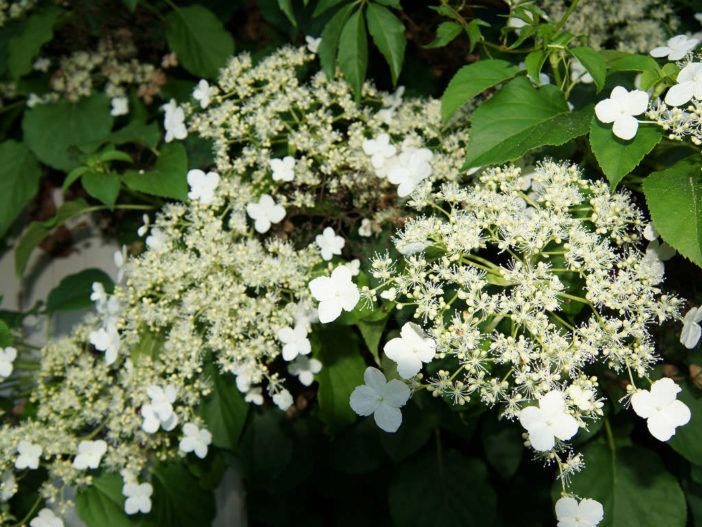Scientific Name
Hydrangea anomala subsp. petiolaris (Siebold & Zucc.) E.M.McClint.
Common Name(s)
Climbing Hydrangea
Synonym(s)
Hydrangea petiolaris, Calyptranthe petiolaris, Hydrangea anomala var. megaphylla, Hydrangea bracteata, Hydrangea cordifolia, Hydrangea scandens var. petiolaris, Hydrangea tiliifolia
Scientific Classification
Family: Hydrangeaceae
Genus: Hydrangea
Flower
Color: White
Bloom Time: Midsummer
Description
Hydrangea anomala subsp. petiolaris is a large self-clinging deciduous climber with green broadly oval leaves turning yellow in fall. Flower heads are up to 8 inches (20 cm) in diameter, with small fertile flowers surrounded by showy white sterile ones.

Hardiness
USDA hardiness zone 4a to 7b: from −30 °F (−34.4 °C) to 10 °F (−12.2 °C).
How to Grow and Care
Hydrangeas prefer a sunny or semi-shaded position in a cool garden area with shelter from cold, drying winds. For this reason, they are especially useful for brightening up shaded borders and make a lovely feature in the dappled shade of woodland gardens. Try to avoid hot, sunny areas and east-facing spots where colds winds can damage the spring growth.
Grow Hydrangea plants in any rich fertile, moist soil. It's a good idea to work in some well-rotted manure or compost before planting Hydrangeas. They will always appreciate a mulch of organic matter in spring to help conserve moisture at their roots and feed them up for the coming growing season. On light soils, it is a good idea to feed Hydrangeas with an ericaceous fertilizer.
See more at How to Grow and Care for Hydrangeas.
Origin
This species is native to the woodlands of the Himalayas, southern and central China, and northern Myanmar.
Links
- Back to genus Hydrangea
- Plantpedia: Browse flowering plants by Scientific Name, Common Name, Genus, Family, USDA Hardiness Zone, or Origin
Photo Gallery
Click on a photo to see a larger version.




